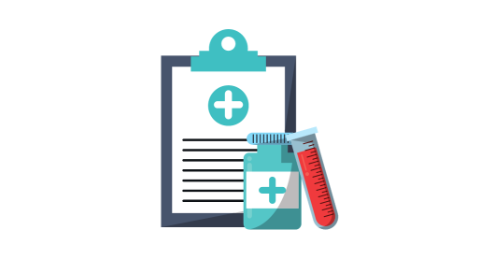
Medical billing plays a crucial role in population health management (PHM) by providing essential data and insights that can help improve health outcomes for specific populations. Here are several keyways in which medical billing impacts PHM:
Data Collection and Analysis
Certainly! Here are three key aspects of data collection and analysis in the context of medical billing’s role in population health management:
1. Comprehensive Claims Data Analysis
- Data Sources: Medical billing generates extensive claims data, including patient demographics, diagnoses, procedures, and costs. This comprehensive dataset is essential for understanding health trends within specific populations.
- Trend Identification: By analyzing this data over time, healthcare organizations can identify patterns in disease prevalence and healthcare utilization, allowing them to target interventions effectively.
2. Risk Stratification and Targeted Interventions
- Identifying High-Risk Populations: Claims data enables healthcare providers to stratify patients based on risk factors such as chronic conditions or frequent healthcare utilization.
- Tailored Programs: This analysis helps organizations design targeted health programs aimed at high-risk groups, ultimately improving health outcomes and reducing costs.
3. Quality Improvement and Outcome Measurement
- Performance Metrics: Billing data can inform key performance indicators (KPIs) related to healthcare quality, such as readmission rates and treatment effectiveness.
- Outcome Tracking: By linking billing data to patient outcomes, organizations can assess the impact of their quality improvement initiatives and make necessary adjustments to enhance care delivery.
Identifying Health Disparities

Identifying health disparities through the lens of medical billing can reveal significant insights into population health management. Here are three key areas where medical billing plays a role in highlighting these disparities:
Access to Care:
Medical billing practices can reflect disparities in access to healthcare services. For example, higher rates of claim denials in specific demographic groups may indicate barriers to accessing necessary medical care. This can help identify populations that struggle to receive timely treatment, often due to socioeconomic factors or lack of insurance coverage.
Cost Burden:
The complexities of medical billing can disproportionately affect low-income individuals and communities. High out-of-pocket costs and unexpected medical bills can lead to delayed or avoided care, exacerbating health disparities. Analyzing billing data can reveal patterns of financial burden and highlight groups that are more likely to forego necessary treatments due to costs.
Utilization Patterns:
Examining billing records can uncover differences in healthcare utilization among various populations. Disparities in the types of services billed (e.g., preventive vs. emergency care) can indicate underlying health inequities. For instance, if certain populations predominantly utilize emergency services instead of preventive care, this may reflect systemic issues in access to routine healthcare.
Quality Measurement and Improvement
Medical billing plays a crucial role in quality measurement and improvement within population health management. Here are three keyways it contributes to this process:
Data Accuracy and Integrity:
Accurate medical billing is essential for capturing relevant patient data, such as diagnoses, treatments, and outcomes. This information feeds into quality measurement frameworks, allowing healthcare organizations to assess the effectiveness of care provided. By ensuring billing data is precise, organizations can better evaluate quality metrics and identify areas for improvement.
Tracking Health Outcomes:
Billing codes, particularly those related to chronic conditions, can help track patient outcomes over time. Analyzing billing data allows healthcare providers to monitor adherence to treatment protocols and evaluate the impact of interventions on specific populations. This tracking can highlight successful strategies and areas needing enhancement, fostering continuous improvement in care quality.
Identifying Performance Gaps:
Medical billing data can reveal discrepancies in care delivery across different populations or healthcare settings. By analyzing billing patterns, organizations can identify gaps in care, such as underutilization of preventive services or disparities in treatment access. This information can inform targeted quality improvement initiatives aimed at addressing these gaps and ensuring equitable, high-quality care for all patients.
Care Coordination
- Integrated Care: Efficient billing processes support integrated care models by facilitating communication among providers. This helps ensure that patients receive comprehensive care, which is essential for managing chronic conditions.
- Patient Follow-Up: Billing records can prompt follow-up care for patients who have missed appointments or treatments, enhancing overall care continuity.
Financial Sustainability

- Revenue Cycle Management: Effective billing practices ensure that healthcare providers are reimbursed adequately for services rendered, which is critical for sustaining population health initiatives.
- Funding Allocation: Understanding the financial aspects of care can help organizations allocate funds more effectively to programs that enhance population health.
Regulatory Compliance
- Adhering to Standards: Accurate billing is essential for complying with regulatory requirements and ensuring that organizations meet quality standards, which can impact funding and support for population health programs.
Supporting Value-Based Care
- Shift to Value-Based Models: As healthcare moves toward value-based care, medical billing must adapt to capture data relevant to patient outcomes and cost-effectiveness, facilitating reimbursement models that reward quality rather than volume.
Conclusion
In summary, medical billing is not just about processing payments; it is a vital component of population health management. By leveraging billing data, healthcare organizations can better understand population health dynamics, implement targeted interventions, and ultimately improve health outcomes while managing costs effectively.